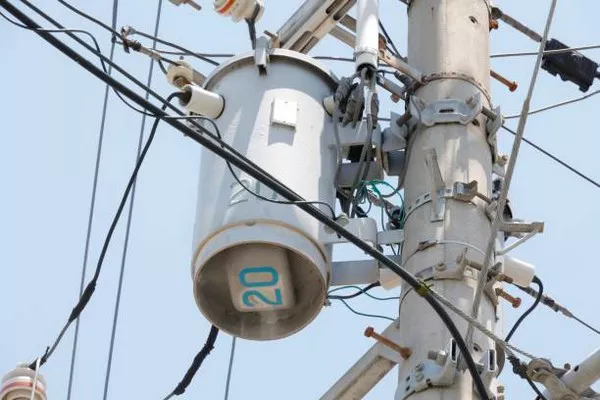Transformers play a crucial role in the functioning of various industries, facilitating the efficient transmission and distribution of electrical power. Over the years, the evolution of transformer technology has witnessed a significant shift, with the advent of advanced solutions known as transformers. In this article, we will delve into the types of transformers commonly used in industry, exploring their features, applications, and the factors influencing their selection.
Conventional Transformers: The Foundation of Power Distribution
Conventional transformers, such as oil-filled transformers, have been the workhorses of the power industry for decades. These transformers operate on the principles of electromagnetic induction and are filled with insulating oil to enhance their performance and insulation properties. They are widely used in various industries for voltage transformation, distribution, and transmission.
Oil-filled transformers are reliable and cost-effective, making them suitable for many applications. However, they have some limitations, including the potential for oil leakage and the need for regular maintenance. These factors led to the exploration of alternative transformer technologies.
Dry-Type Transformers: Embracing Environmental Sustainability
As environmental concerns gained prominence, the industry witnessed a shift towards dry-type transformers. Unlike their oil-filled counterparts, dry-type transformers use solid insulation materials, eliminating the need for flammable oils. This makes them more environmentally friendly and reduces the risk of fire hazards, making them suitable for indoor applications.
Dry-type transformers are known for their low maintenance requirements and the ability to operate in challenging environments. They find applications in buildings, tunnels, and other spaces where oil-filled transformers may pose safety concerns. Additionally, their compact design and reduced noise levels contribute to their growing popularity.
Amorphous Core Transformers: Enhancing Energy Efficiency
The pursuit of energy efficiency in power distribution led to the development of amorphous core transformers. These transformers utilize amorphous metal alloys as the core material, which reduces energy losses compared to traditional silicon steel cores. The lower core losses result in improved efficiency and reduced operational costs over the transformer’s lifespan.
Amorphous core transformers are particularly favored in applications where energy conservation is a priority, such as in smart grids and green buildings. While they may have a higher upfront cost, the long-term energy savings make them an economically viable and environmentally conscious choice.
Resonant Transformers: Optimizing Power Quality
Power quality is a critical consideration in many industrial processes, and resonant transformers have emerged as a solution to address this concern. Resonant transformers operate in conjunction with capacitors and inductors to create a resonant circuit. This configuration helps mitigate voltage fluctuations and harmonics, ensuring a stable and high-quality power supply.
Industries with sensitive electronic equipment, such as data centers and manufacturing plants, often deploy resonant transformers to safeguard against power disturbances. The ability to maintain a consistent voltage level contributes to improved operational reliability and reduced downtime.
Smart Transformers: Transforming the Future of Power Distribution
The integration of digital technology in power systems has given rise to smart transformers, also known as intelligent or digital transformers. These transformers are equipped with sensors, communication interfaces, and advanced monitoring capabilities. The real-time data collected by smart transformers enables proactive maintenance, remote monitoring, and improved grid management.
Smart transformers play a crucial role in the development of smart grids, where they contribute to grid stability, load management, and the integration of renewable energy sources. The ability to communicate and adapt to changing conditions positions smart transformers as a key component in the modernization of power infrastructure.
Factors Influencing Transformer Selection in Industry
The choice of transformers in industrial applications is influenced by various factors, including power requirements, environmental considerations, and specific application needs. The following factors are crucial in determining the most suitable transformer for a given application:
Power Rating and Load Characteristics: The power rating of a transformer should align with the load requirements of the industrial process. Understanding the load characteristics, such as fluctuating or constant loads, helps in selecting the appropriate transformer type.
Environmental Conditions: The operating environment significantly impacts transformer performance. Factors such as temperature, humidity, and the presence of corrosive substances influence the choice between oil-filled, dry-type, or other transformer types.
Energy Efficiency: In an era of increasing focus on sustainability, energy efficiency is a key consideration. Amorphous core transformers and smart transformers are chosen for applications where minimizing energy losses and optimizing power usage are paramount.
Reliability and Maintenance Requirements: The reliability of power supply is critical for industrial processes. Transformers with low maintenance requirements, such as dry-type and smart transformers, are preferred to minimize downtime and operational disruptions.
Power Quality: Industries with sensitive equipment demand high power quality to prevent equipment damage and ensure smooth operations. Resonant transformers and smart transformers, with their power conditioning capabilities, address power quality concerns effectively.
See Also Why KVA Rating Is Used In Transformer
Conclusion
The landscape of transformers in the industrial sector has evolved significantly, driven by technological advancements, environmental considerations, and the need for enhanced performance. Conventional transformers, while still widely used, now share the stage with innovative solutions such as dry-type, amorphous core, resonant, and smart transformers. The choice of transformer type depends on various factors, including power requirements, environmental conditions, energy efficiency goals, and the need for reliable power quality.
As industries continue to embrace digitalization and sustainable practices, the role of transformers in power distribution will only become more critical. The ongoing research and development in transformer technology promise further innovations, ensuring that the industrial sector benefits from efficient, reliable, and environmentally conscious power solutions.

